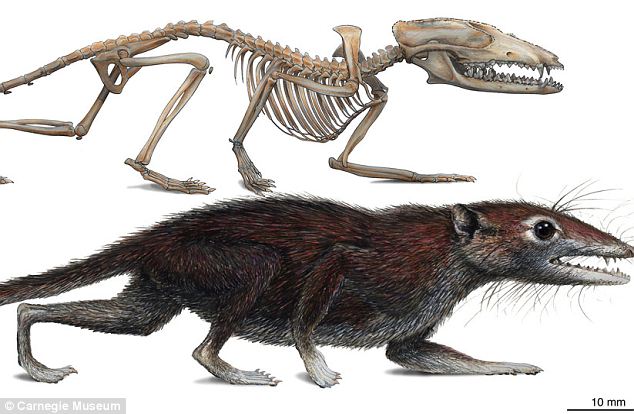Ancient Rodent Found in China, And It Has Never-Before-Seen Inner Ear Structure

Researchers in China made one-of-a-kind discovery of rodent-like mammal, which possess a never seen before form of hearing. The small animal’s well-preserved fossils, entitled Jeholbaatar kielanae, were found in the Jiufotang Formation in China’s Liaoning Province. The findings were examined by the Institute of Vertebrate Paleontology and Paleoanthropology in Beijing. According to researchers, the ancient rodent mammal originates from a species named multituberculates.
It lived in the Cretaceous period, co-existing with dinosaurs, approximately 120 million years ago, and it weighed almost 1,5 ounces. The Jeolbaatar kielanae has among its defining features, a peculiar hearing apparatus that may indicate to researchers how and why mammals sense of hearing developed in time.
Moreover, the creature’s fossils display an even-odd arrangement of its ears’ bones. It has a small bone known as incus situated behind a more prominent bone, the malleus.
Chinese scientists found an ancient rodent species with never-before-seen inner ear structure
Researchers explain that such an arrangement is very significant because it helped the creature to develop a type of chewing motion — such action was conducted by choice for specific categories of food. It is also unique because, like cats, for example, it didn’t use a vertical biting motion.
Yuanqing Wang, from the Institute of Vertebrate Paleontology and Paleoanthropology in Beijing, explained why this rodent-like mammal is so significant for future studies. He stated, “The specimen provides important evidence regarding mammalian middle-ear evolution (…) Jeholbaatar would suggest requirements for feeding triggered the development of the middle ear in multituberculates.” Also, researchers discovered that based on the lower cheek of the creature, it had an omnivorous diet, feeding on plants and arthropods, for example.
What researchers found intriguing, however, was that feeding appears to influence the mammalian jaw and ears. Such a fact represents a link that may help provide insight into how and why animals modified their hearing apparatuses during the evolutionary chain.
0 comments